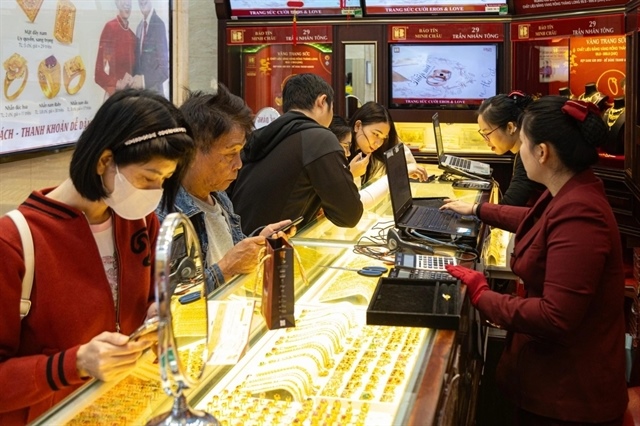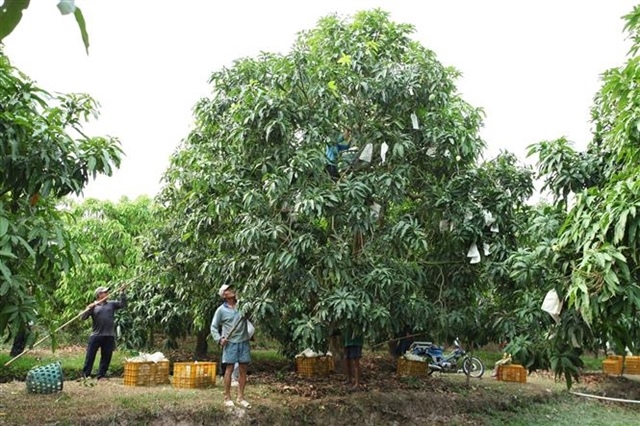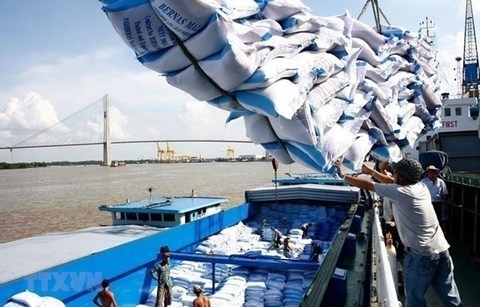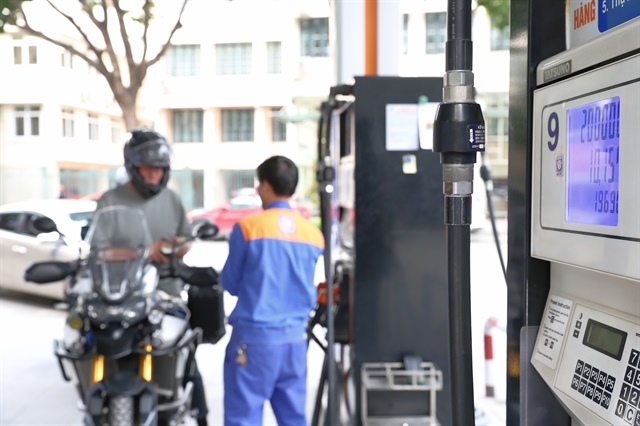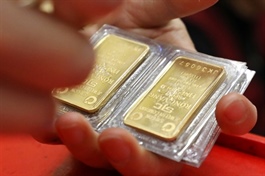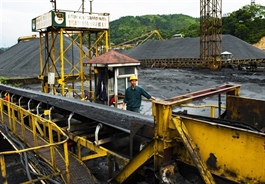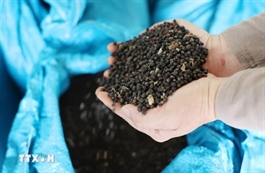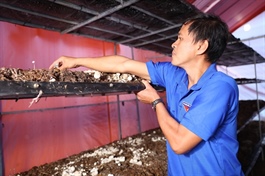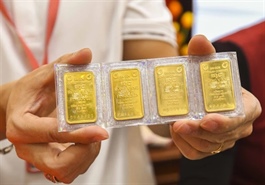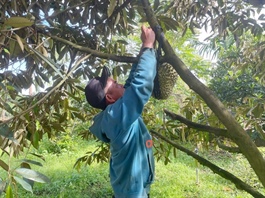How Vietnam can ensure greener steel
How Vietnam can ensure greener steel
Vietnam’s pledge to achieve net-zero carbon emissions by 2050 will require key reforms in many sectors, including in steel. Patrick Lenain, senior associate from the Council on Economic Policies, and Deepak Sharma, independent consultant working with the International Institute for Sustainable Development, look at how Vietnam can foster a green steel industry in this context.

(L-R) Patrick Lenain, senior associate from the Council on Economic Policies, and Deepak Sharma, independent consultant working with the International Institute for Sustainable Development |
Decarbonising steel production will be critical in view of the industry’s rapid growth in recent years. According to the World Steel Association, Vietnam surpassed Italy in 2024 with its production of 22 million tonnes, becoming the 11th largest steel producer globally.
In the first half of this year, finished steel output rose 9.7 per cent from the previous year to 16 million tonnes, suggesting that annual production may significantly exceed the previous year’s level. This sustained growth consolidates Vietnam’s position as one of ASEAN’s leading steel producers.
The steel industry is an important pillar of Vietnam’s economic development. It provides input for the country’s rapid infrastructure expansion, it supports key manufacturing sectors such as construction and shipbuilding, and it contributes to export revenues and industrial employment.
The industry is led by privately owned Hoa Phat Group, which accounts for 40 per cent of national crude steel output. Formosa Ha Tinh Steel, a Taiwanese Vietnamese joint venture, is the second-largest producer, operating a major blast-furnace complex in central Vietnam. Vietnam Steel Corporation is an important state-linked holding company, Hoa Sen Group dominates coated and galvanised steel, and Pomina Steel and Vina Kyoei serve construction markets.
The sector is concentrated, energy-intensive, and a major source of industrial emissions. In 2023, Vietnam’s steel industry emitted approximately 32 million tonnes of CO2. This corresponds to about 8-9 per cent of Vietnam’s national greenhouse gas emissions. With its fast growth, the sector is on a path to emit close to 40 million tonnes of CO2 in the near future.
Vietnam’s steel exports flow mainly to ASEAN countries, China, and increasingly to the EU, which will require a growing share of steel with lower carbon content. The EU Carbon Border Adjustment Mechanism (CBAM) will impose carbon tariffs from 2026, making decarbonisation an economic necessity.
With growing global demand for low-carbon steel from automotive, construction, and manufacturing industries, Vietnam has an opportunity to position itself as a competitive green steel producer in Asia.
The hopes of green steel
Vietnam’s steel sector emits carbon dioxide mainly because it depends on coal-based blast furnace-basic oxygen furnace technology, where coke serves both as fuel and as a chemical agent to reduce iron ore, releasing CO2 in the process.
About 70 per cent of emissions come from this type of tech using imported coking coal, and 30 per cent from electric arc furnaces using scrap. All this makes steel one of the country’s most carbon-intensive industries.
Emissions from steel production can be reduced in the near term. According to the International Energy Agency, improving material efficiency, such as reducing scrap losses through better collection and sorting, could cut industrial CO2 emissions by more than 40 per cent by 2050, while deploying the best available technologies and energy-efficient upgrades can reduce energy use in existing plants by up to 20 per cent.
In the long term, green steel produced using green hydrogen, renewable electricity, or other low-carbon technologies instead of coal offers a pathway to decarbonise this hard-to-abate sector.
Transition strategies such as hydrogen blending and carbon capture, utilisation, and storage (CCUS) retrofits can help reduce emissions. The optimal pathway depends on regional conditions but scaling low-cost options now while preparing for CCUS and low-carbon hydrogen is essential for a resilient net-zero transition.
A number of countries are making notable strides in green steel production, offering valuable lessons for Vietnam’s development strategy.
India, the world’s second-largest steel producer, has begun a phased shift towards low-carbon steelmaking. Major companies such as Tata Steel, JSW Steel, and ArcelorMittal Nippon Steel India are investing in scrap-based electric arc furnaces, hydrogen-ready direct reduced iron technology, and carbon-capture pilots.
Tata Steel has tested hydrogen injection in blast furnaces, JSW plans up to $13 billion in decarbonisation projects and renewable integration; and AM/NS India is investing about $7 billion to make much of its Hazira output green steel. National policies, such as the steel scrap recycling policy, PLI scheme for speciality steel, and the national green hydrogen mission, are aligning incentives and pilot funding.
India’s gradual, policy-supported transition offers a pragmatic model for emerging economies like Vietnam.
Oman provides another instructive example of how an emerging economy can leverage its natural advantages to attract green-steel investment.
The country is developing the Vulcan Green Steel project in Duqm, led by Jindal Steel Group, which will use aforementioned tech powered by solar and wind energy. Backed by government incentives such as long-term land leases, reduced fees, and streamlined approvals, the project positions Oman as a regional green-industry hub connecting Asia, Europe, and Africa.
Although Oman lacks domestic iron ore, its renewable potential, hydrogen strategy, and proactive investment climate illustrate how clear policy direction and infrastructure planning can draw large-scale private investment, offering useful lessons for Vietnam as it pursues industrial growth within a low-carbon framework.
Costs and constraints
Vietnam’s steel industry faces mounting pressure to decarbonise, but also confronts structural constraints. The country imports most of its iron ore and scrap steel, and local ore quality is low, a significant limitation for direct reduced iron production.
This reliance on imports means that Vietnam’s competitiveness in green steel will depend heavily on processing efficiency and access to clean energy rather than raw material advantages.
At the same time, the country has several strengths to build upon. Vietnam’s expanding renewable power capacity, particularly solar and wind, provides a foundation for decarbonisation.
The Power Development Plan VIII envisions substantial renewable energy zones. However, it remains to be seen if Vietnam’s green hydrogen strategy can benefit steel and other challenging sectors to reduce emissions.
In the near term, expanding electric arc furnace capacity using scrap represents the most practical decarbonisation pathway. With 30 per cent of production already using this less emissions-intensive method, Vietnam has a foundation to build upon.
Increasing scrap collection and recycling infrastructure could enable a relatively quick shift away from coal-intensive blast furnaces. Natural gas-based direct reduced iron, using liquefied natural gas from Vietnam’s expanding import infrastructure, offers a transitional route before green hydrogen becomes commercially viable.
Costs remain a challenge. A recent analysis suggests that green steel using hydrogen-based direct reduced iron costs approximately $600-800 per tonne, compared to $400-500 for conventional blast furnace steel.
While more costly, green steel will be able to access the EU markets without paying the CBAM’s carbon tariff. This could make government support for green steel worthwhile, as it would allow access to EU markets.
To get a competitive edge, many countries are now supporting green steel with fiscal incentives either to support green hydrogen or CCUS. For instance, the US 45V clean hydrogen production tax credit indirectly supports steel decarbonisation by reducing the cost of green hydrogen inputs. This incentive can lower the cost of hydrogen-based steelmaking close to the cost of conventional coal-based steel.
Canada’s refundable CCUS tax credit, in place from 2022 to 2040, covers 37.5–60 per cent of eligible costs, including geological storage, offering long-term certainty for steel and other industrial emitters.
In Asia, Malaysia provides a 10-year investment allowance and 70 per cent income tax reduction for CCUS service providers, creating one of the region’s most proactive industrial carbon management frameworks.
As of now, Vietnam does not provide subsidies or tax credits to support green steel. Its fiscal constraints limit the government’s ability to provide large-scale, long-term subsidies comparable to those in wealthier nations. The steel industry’s capital-intensive nature means that retrofitting existing facilities or building new green steel plants requires significant investment, often billions of dollars per facility.
In private steel mills, the government cannot subsidise the costly retrofit of private steel mills, but it could encourage it with incentives that do not strain the public budget, such as accelerated depreciation or research and development tax credits.
Vietnam can also foster a green steel industry despite limited fiscal space by focusing on regulatory and market-based tools. The government can create a predictable carbon-pricing framework through its forthcoming emissions trading system, recycle revenues into targeted incentives, and mandate low-carbon standards in public procurement.
Access to concessional and blended finance from multilateral partners, such as the Just Energy Transition Partnership, World Bank, Asian Development Bank, and decarbonisation funds, can de-risk private investment.
Foreign investment by firms with the technology and experience would be very beneficial. Coupled with long-term renewable power contracts and growing export demand for low-carbon steel under the EU’s CBAM, these mechanisms could go a long way to attract private capital without straining the budget.
- 13:24 18/11/2025


